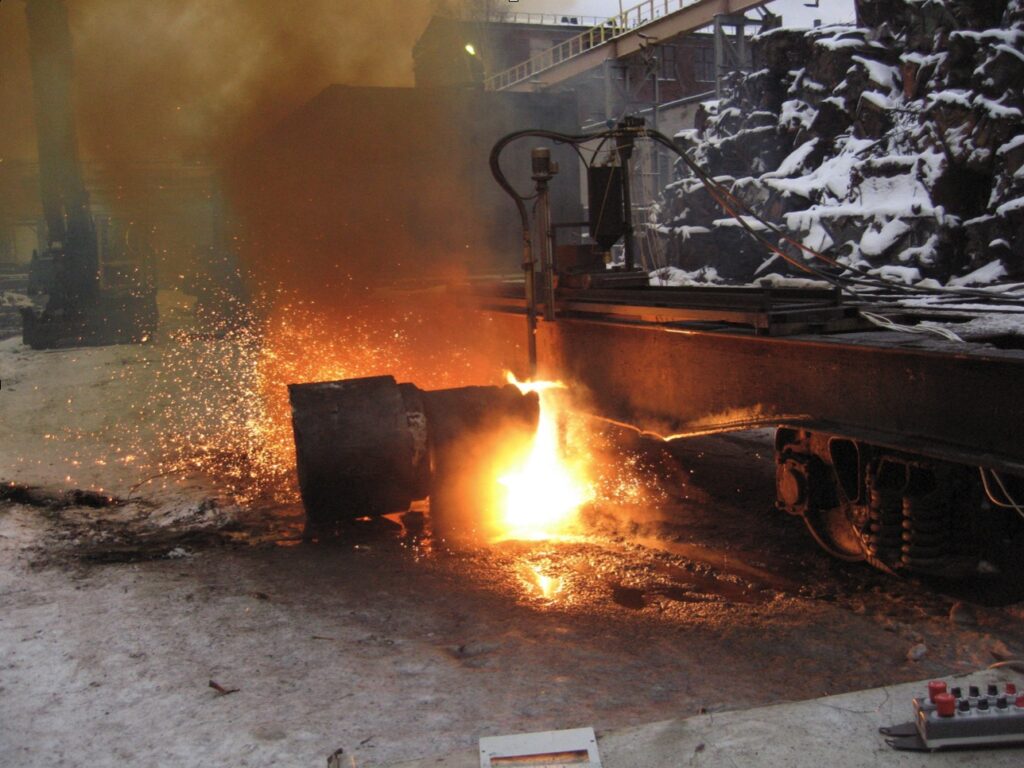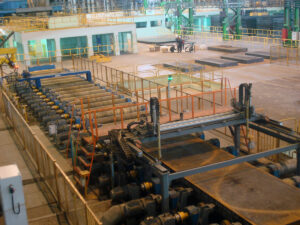
Scrap collection using Nord-500 thermal cutting machine 
Heavy Scrap cutting 
Heavy Scrap cutting
Heavy Scrap cutting
Heavy scrap consists of large ingots of iron castings with a thickness of up to 2000 mm, solidified metal from intermediate and steel-making pads of continuous casting machines, solidified slag with an iron content of 60 to 80%, complex bulk prefabricated metal structures such as pipe heat exchangers, bundles of pipes and sheets, pressed packets of scrap metal with large voids inside, reinforced concrete structures.
In addition to the need to use a unique technology for cutting large thicknesses, it is also necessary to improve the oxidative reaction of iron when cutting heavy scrap. This is achieved by powder cutting. Fine iron powder is fed into the cutting zone, which, by reacting with oxygen, raises the temperature of the melt zone to almost 4000 K. As a result, the base metal begins to melt and the kinetic energy of metal powder and oxygen blows it out of the cutting zone. Using this approach, it is possible to cut not only complex scrap with a thickness of one meter or more, but even reinforced concrete.
For cutting super-thick scrap (from 1000 to 2500 mm) with a high content of non-metallic inclusions, bar cutting is used, where a burning iron tube is used as a spear, into which iron powder is often fed to further raise the temperature.
Plazmamax makes oxy-fuel and plasma-cutting equipment used to produce trusses, bridges, cranes, railways, power lines, fencing lights, and wagons. Our equipment can also be used to construct oil and metallurgical plants, with the added benefit of applying high-quality protective, anti-corrosion coatings.


